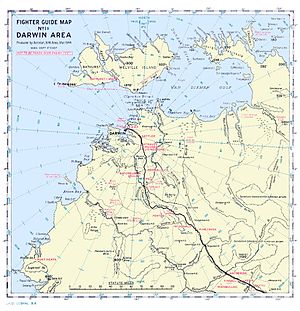

During the Pacific War the Imperial Japanese Navy Air Force and Imperial Japanese Army Air Force conducted air raids on the Australian mainland, domestic airspace, offshore islands, and coastal shipping, attacking at least 111 times between February 1942 and November 1943. These attacks came in various forms; from large-scale raids by medium bombers, to torpedo attacks on ships, and to strafing runs by fighters.
In the first and deadliest set of attacks, 262 aircraft hit Darwin on the morning of 19 February 1942. Killing at least 235 people and causing immense damage, the attacks made hundreds of people homeless and resulted in the abandonment of Darwin as a major naval base.
These attacks were opposed by, and often aimed at, units and personnel from the Royal Australian Air Force (RAAF), Australian Army, Royal Australian Navy, United States Army Air Forces, United States Navy, British Royal Air Force and Royal Netherlands East Indies Air Force. Japanese aircrews also targeted civil infrastructure, including harbours, civil airfields, railways, and fuel tanks. Some civilians were also killed.
Although the main defence was provided by RAAF and Allied fighters, a number of Australian Army anti-aircraft batteries in northern Australia also defended against Japanese air raids.[1]
- ^ Horner 1995, p. 379.